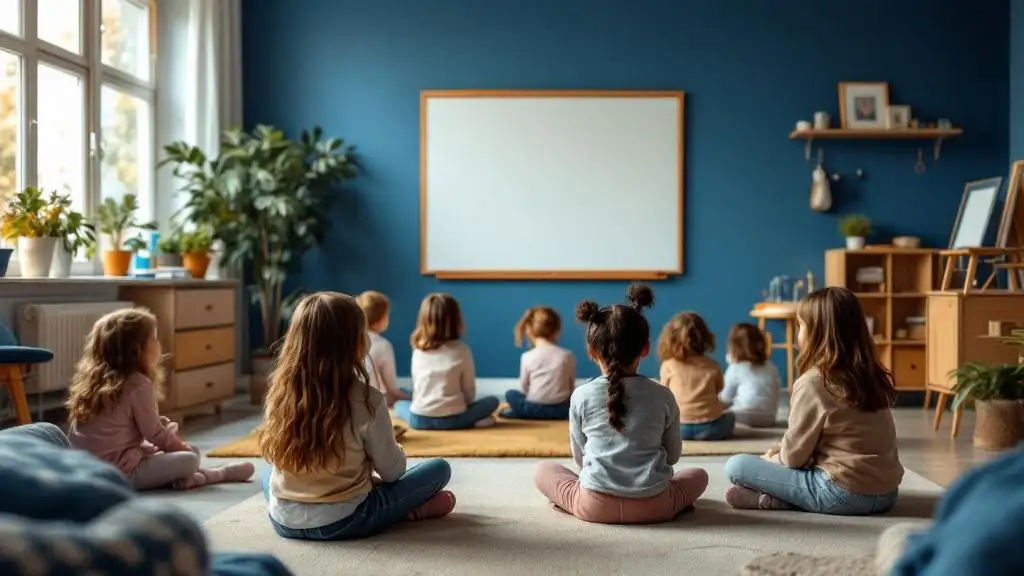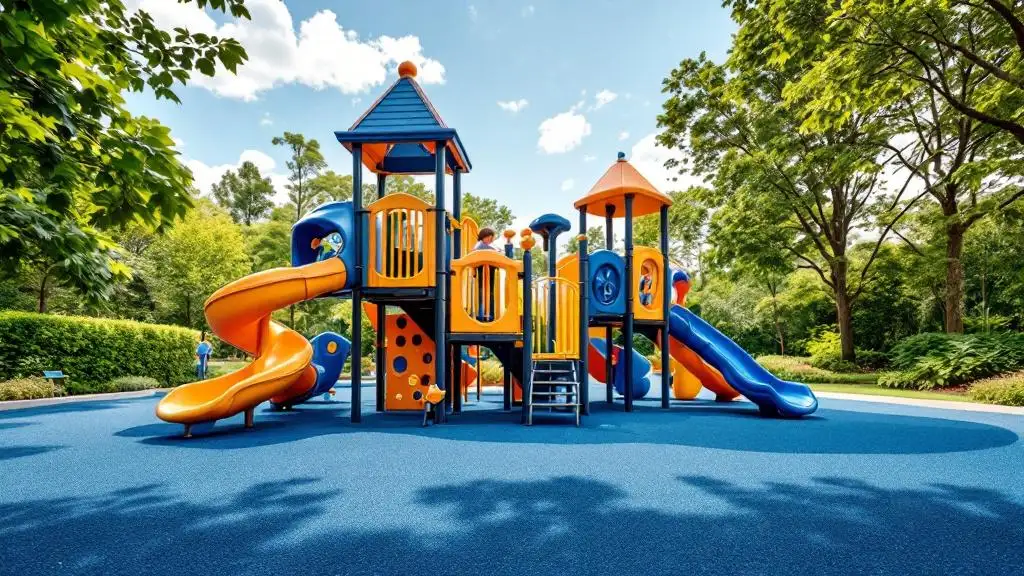
Unlocking the Power of Communication in Social Contexts
Social communication skills are essential for forming relationships, succeeding academically, and navigating the social world effectively. Speech therapy plays a pivotal role in developing and strengthening these skills, especially for individuals facing challenges due to conditions such as autism spectrum disorder (ASD) or social communication disorder (SCD). This article explores how speech-language pathologists employ specialized techniques to improve pragmatic language skills and social understanding, ultimately enabling individuals to engage more confidently in their social environment.
Understanding Social Communication
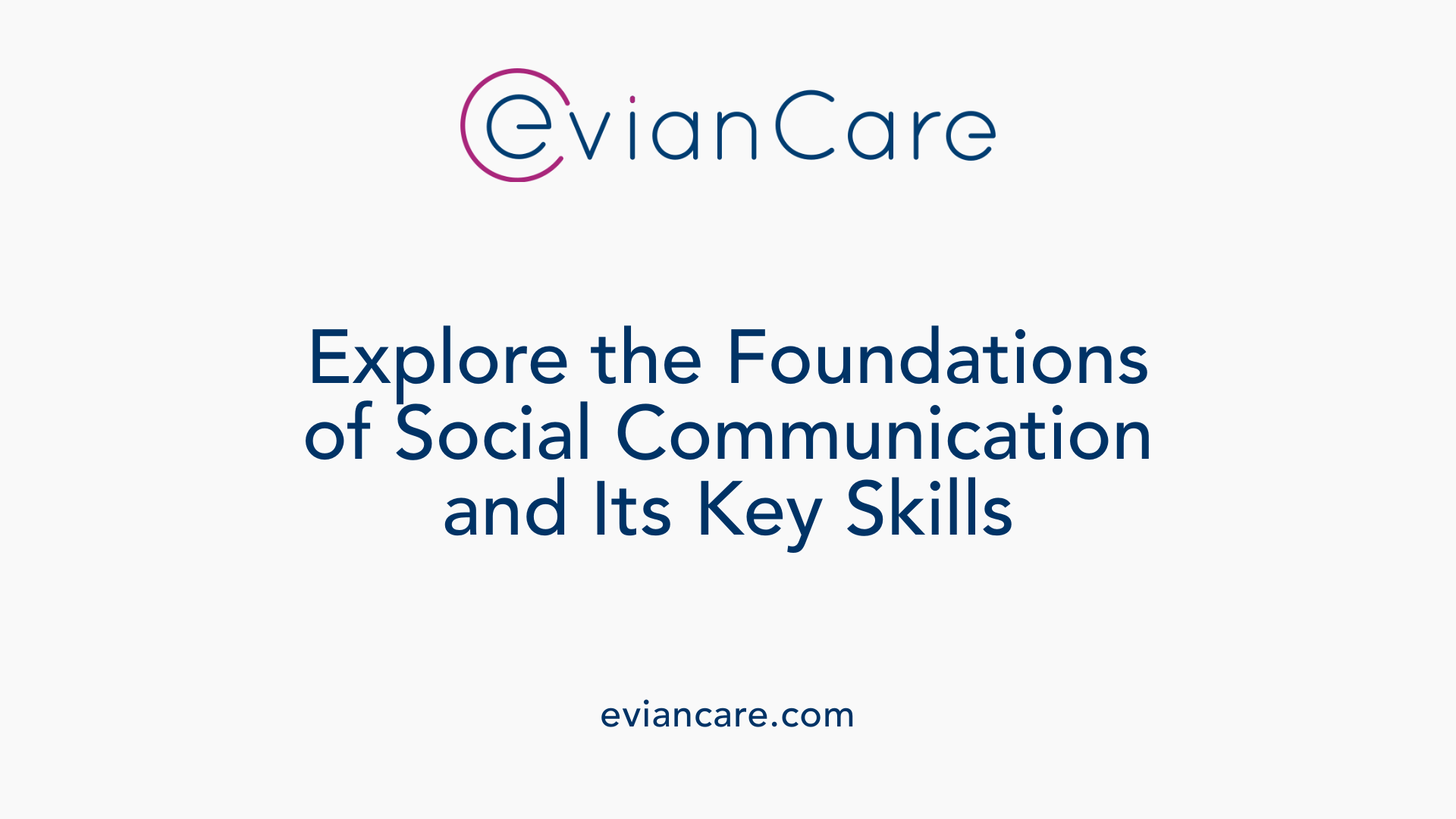
What is social communication?
Social communication involves using language and social behaviors to interact effectively with others. It includes speaking, understanding nonverbal cues like facial expressions and gestures, and following social rules that aren't always written down. These skills are essential for making friends, participating at school or work, and building personal relationships.
What are the three major skills involved in social communication?
There are three main skills that help people communicate socially:
- Using language for different purposes such as greeting, requesting, or sharing information.
- Adapting how one speaks depending on who they are talking to and the situation.
- Following conversational rules like taking turns, staying on topic, and understanding storytelling and humor.
Why are social cues and context important?
Social cues such as facial expressions, gestures, and tone of voice give others important information about how to interpret messages and respond appropriately.
Context, including the social setting and the relationship between people, guides how language is used. Unwritten rules—like knowing when to speak or how much to share—also shape social interactions.
Challenges in social communication
Many individuals may find it hard to learn or apply these social skills. Common difficulties include understanding social cues, interpreting figurative language or sarcasm, and adjusting speech for different social settings. These challenges can affect friendships, school performance, and workplace interactions.
Speech-language pathologists are trained to assess these difficulties and develop personalized therapy plans. Techniques such as role-playing, social stories, and video modeling are used to teach and practice social skills.
How can social communication be developed?
Skills develop through direct teaching, observing others, and practicing in social situations. Early intervention and ongoing support can make a big difference, especially for children with autism spectrum disorder and other social communication challenges.
Collaboration with caregivers, teachers, and professionals ensures that individuals learn appropriate social behaviors across different environments. Resources like social skills groups, online programs, and social stories provide additional practice and reinforcement.
By improving social communication, individuals gain confidence, better relationships, and more success in educational, personal, and professional areas.
| Key Aspects | Examples | Purpose |
|---|---|---|
| Verbal skills | Greetings, asking questions | Facilitate conversation |
| Nonverbal cues | Facial expressions, gestures | Convey emotions and intent |
| Social rules | Turn-taking, maintaining topic | Ensure smooth interactions |
| Adaptation skills | Changing language based on listener | Fit social context |
| Recognition | Picking up social cues | Respond appropriately |
Understanding and practicing these skills helps build meaningful connections and navigate social environments more effectively.
Assessment and Identification of Social Communication Difficulties
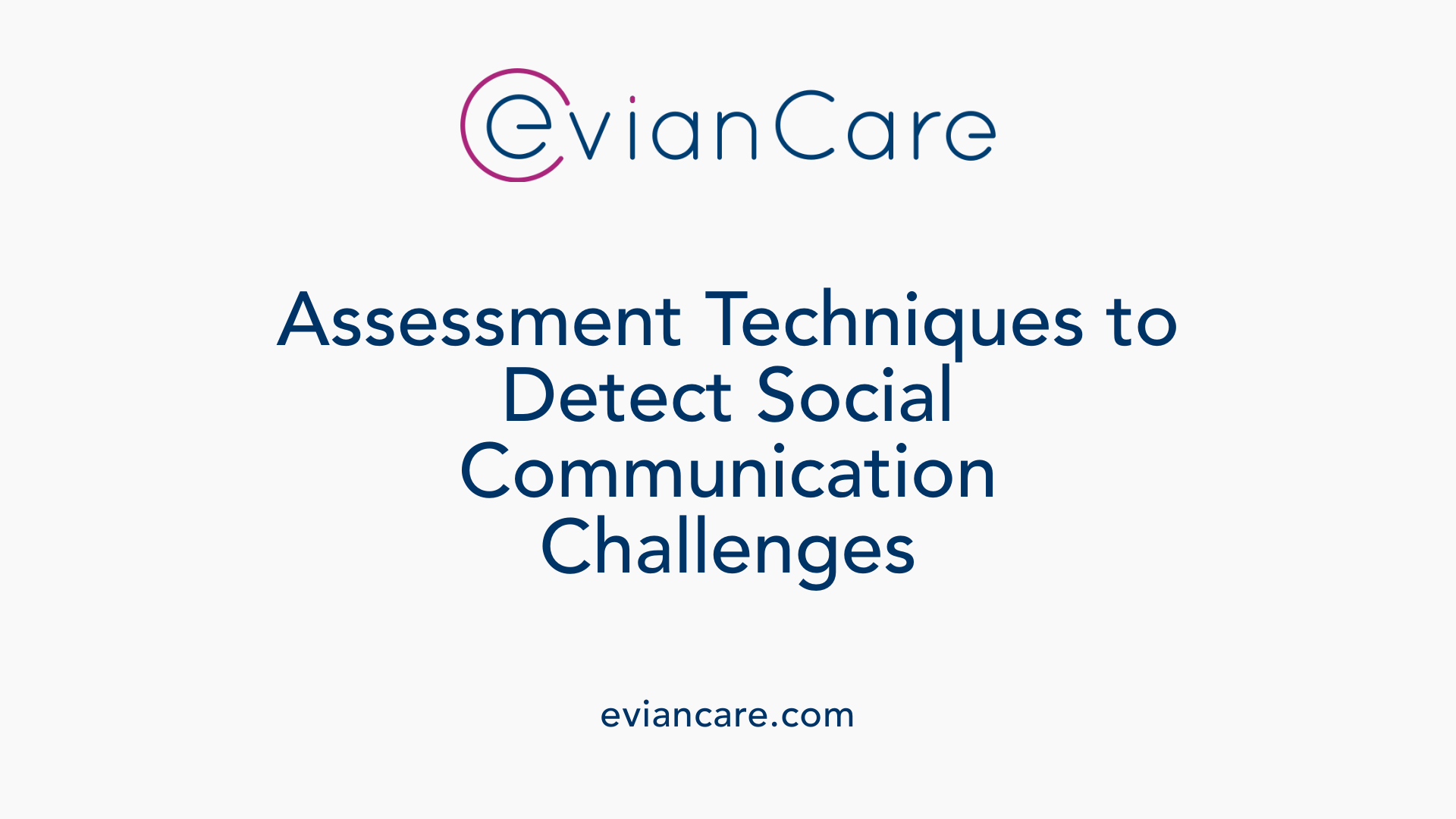
What assessment methods are used to identify social communication difficulties?
Identifying social communication challenges involves multiple approaches to get a comprehensive understanding of an individual's abilities and difficulties. Standardized tests such as the Clinical Evaluation of Language Fundamentals (CELF), Social Responsiveness Scale (SRS), and Autism Diagnostic Observation Schedule (ADOS) are commonly used tools. These assessments help measure pragmatic language skills, social responsiveness, and overall social communication competence.
In addition to standardized testing, observational techniques play a vital role. Speech-language pathologists observe individuals in naturalistic settings like playgrounds, classrooms, or social groups. Structured observation in controlled environments allows practitioners to evaluate how a person uses language and nonverbal cues during social interactions.
Caregiver and teacher reports are invaluable for understanding everyday social behaviors. Questionnaires and checklists completed by these adults highlight real-life social skills, such as turn-taking, eye contact, and understanding social cues. These tools provide context-rich insights that complement formal assessments.
Language sampling, where a clinician records and analyzes a person's spontaneous speech during interactions, helps assess pragmatic language use, conversational skills, and social awareness. Dynamic assessments, involving interactive tasks to evaluate learning potential and adaptation, further inform intervention planning.
A thorough evaluation considers developmental history, cultural norms, and linguistic background to ensure accurate diagnosis. Combining multiple methods ensures a personalized approach, crucial for effective social communication interventions.
Speech Therapy Techniques for Social Skills Development
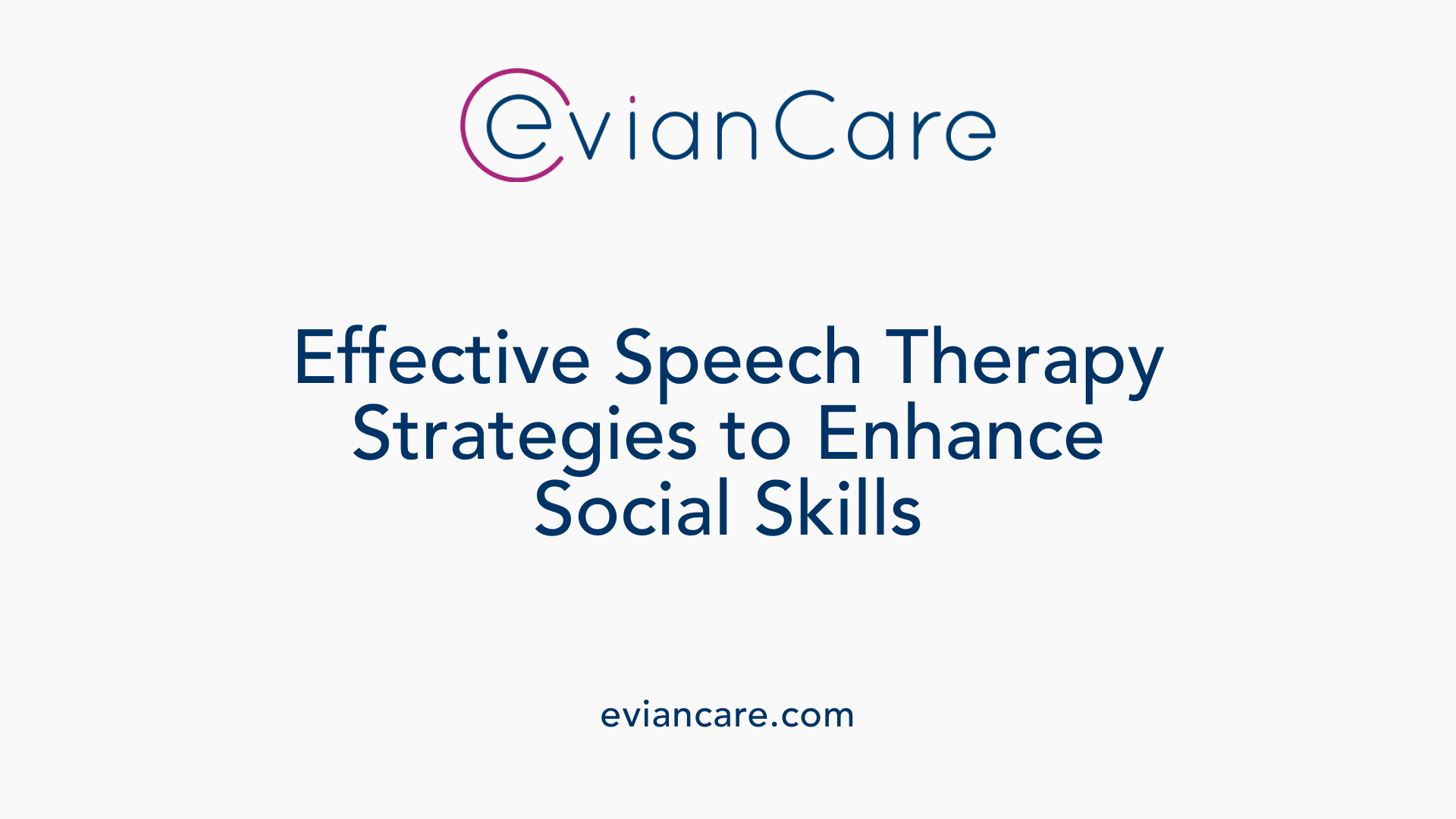
What techniques are used in speech therapy to improve social skills?
Speech therapy employs a variety of methods to help individuals improve their social communication abilities. Among these, role-playing scenarios allow clients to practice real-life interactions such as greeting others, asking questions, or managing conversations. Social stories are used to teach appropriate social behaviors and responses by illustrating common social situations and expected behaviors.
Video modeling is another effective method, where individuals observe videos of peers or adults demonstrating proper social skills, helping them imitate and internalize these behaviors. Social skills groups provide a structured environment for practicing skills like turn-taking, maintaining eye contact, and understanding social cues through peer interaction.
Visual supports, such as picture cards or cue charts, are used to reinforce understanding of social concepts and cues. Activities like comic strip conversations and scripted responses provide personalized practice, making abstract social rules more concrete. These techniques help individuals recognize nonverbal signals, interpret emotions, and navigate social interactions more effectively, ultimately leading to enhanced participation in social settings.
Do speech-language pathologists teach social skills and what techniques do they use?
Yes, speech-language pathologists (SLPs) play a pivotal role in teaching social skills, especially to individuals with social communication challenges. They utilize evidence-based strategies such as role-playing, social stories, and video modeling to foster social understanding.
SLPs focus on teaching core skills such as making appropriate eye contact, understanding body language, and recognizing social cues like facial expressions and gestures. They often organize social skills groups where participants can practice these skills in a safe, supportive environment.
Other techniques include the use of mirror exercises for self-awareness, scenario-based activities for practicing responses, and visual supports for better comprehension of social norms. Tailoring activities to match individual needs allows SLPs to build confidence and competence in social interactions. Caregiver involvement is also emphasized, enabling reinforcement of skills in everyday environments and promoting generalization beyond therapy sessions.
| Technique | Description | Benefits |
|---|---|---|
| Role-playing | Simulation of social situations to practice responses | Builds confidence, improves conversational skills |
| Social stories | Illustrated narratives teaching social norms | Clarifies expectations and appropriate behaviors |
| Video modeling | Watching videos of social interactions | Reinforces understanding through observation |
| Visual supports | Pictures, cue cards for social cues | Enhances recognition and understanding of cues |
| Social skills groups | Peer-based practice environments | Encourages real-world application and feedback |
Additional resources like apps, social stories, and worksheets further supplement therapy, enabling consistent practice. Overall, speech-language pathologists are dedicated to developing social competence through a blend of engaging, evidence-backed strategies.
Goals and Outcomes of Social Skills Speech Therapy
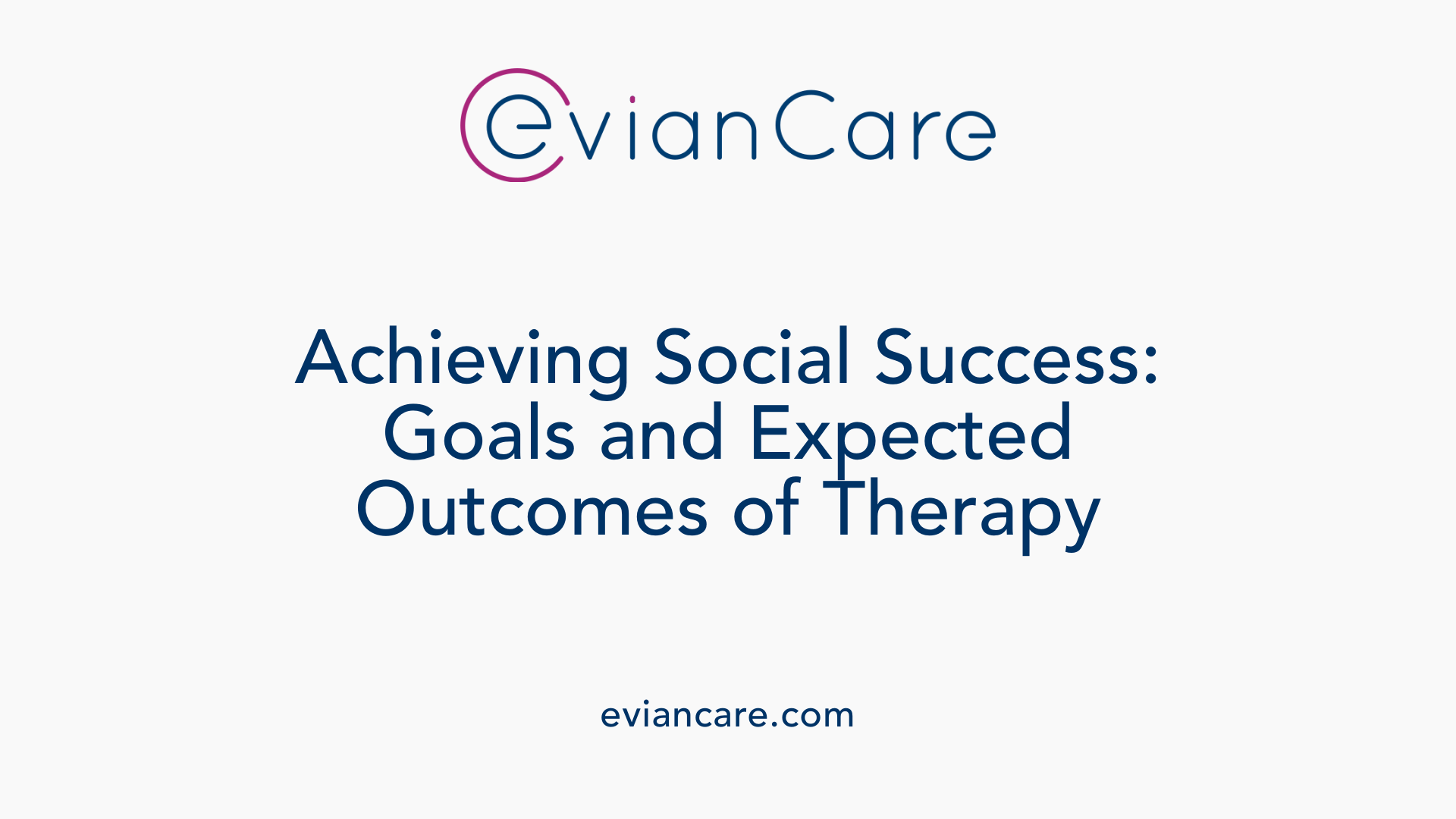
What are the goals of social skills speech therapy?
The primary aim of social skills speech therapy is to improve a person’s ability to communicate effectively within social contexts. This involves teaching individuals how to initiate and sustain conversations, interpret nonverbal cues such as facial expressions, gestures, and tone of voice, and participate appropriately in social interactions.
Therapists work on developing specific behaviors like making eye contact, turn-taking in conversations, understanding social norms, and recognizing emotions. Building these skills can lead to better relationships, greater social confidence, and smoother interactions in everyday life.
Goals set during therapy are tailored to each individual’s needs and are often measurable, ensuring progress can be tracked. Techniques such as role-playing, social stories, and modeling are frequently used to teach and reinforce these skills.
Ultimately, the aim is to help individuals participate meaningfully in social activities at school, work, and in personal relationships, promoting independence and social success.
Benefits of Speech Therapy in Social Communication
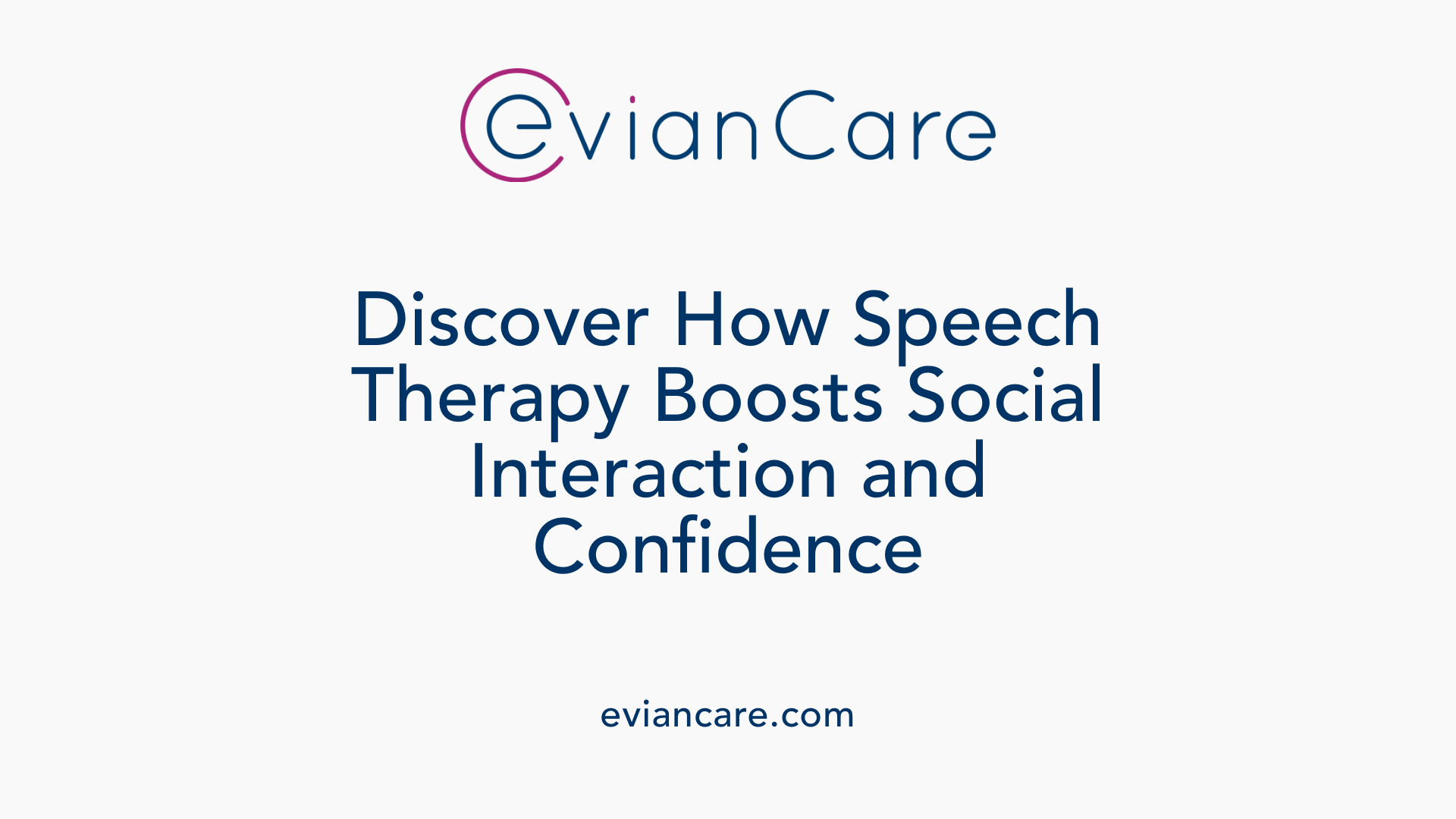 Speech therapy plays an essential role in improving social communication skills across various age groups. It can significantly enhance interpersonal interactions, allowing individuals to communicate more effectively and confidently in daily life.
Speech therapy plays an essential role in improving social communication skills across various age groups. It can significantly enhance interpersonal interactions, allowing individuals to communicate more effectively and confidently in daily life.
One major benefit is the improvement in social interactions. Through targeted exercises such as role-playing, social scripts, and video modeling, individuals learn to recognize social cues like facial expressions and gestures. This better understanding helps them respond appropriately, fostering smoother conversations and stronger relationships.
Building social understanding and skills is another crucial aspect. Speech therapy helps teach the rules of social engagement, including turn-taking, maintaining eye contact, and understanding humor or sarcasm. These skills are fundamental for social participation, whether in school, work, or personal relationships.
Therapy also boosts confidence and independence. As individuals develop their communication abilities, they become more comfortable initiating interactions and managing social situations. This increased self-assurance encourages greater participation in social activities and reduces feelings of social anxiety.
Addressing social and emotional difficulties early can prevent more serious issues later. Improving pragmatic language skills—how language is used in social contexts—can mitigate challenges related to social understanding, emotional recognition, and social norms. For example, children with social communication difficulties, including those on the autism spectrum, often experience fewer misunderstandings and conflicts as their social skills grow.
Speech-language pathologists (SLPs) tailor each therapy plan to the individual’s needs, ensuring targeted and effective intervention. Techniques like social stories, collaborative problem-solving, and real-world social practice help reinforce learning and generalize skills beyond therapy sessions.
In summary, speech therapy enhances functional social skills, leading to better personal, academic, and professional interactions. By developing pragmatic language abilities, understanding social cues, and practicing appropriate responses, individuals can navigate social environments with greater ease and confidence.
| Benefit Area | Focus | Impact |
|---|---|---|
| Interaction Skills | Using language for different purposes | Improved communication in social settings |
| Social Understanding | Recognizing cues and social rules | Better social adaptations and relationship building |
| Confidence & Independence | Practicing real-world scenarios | Increased self-assurance and initiative |
| Preventative Support | Early intervention | Reduced social and emotional difficulties |
Overall, speech therapy offers valuable support for mastering social communication, fostering more meaningful connections and fostering societal participation.
Role of Speech-Language Pathologists and Family Involvement

What is the role of speech-language pathologists in social communication therapy?
Speech-language pathologists (SLPs) play a vital role in supporting individuals with social communication difficulties. They first assess and diagnose specific challenges, such as trouble understanding social cues or maintaining appropriate conversation topics. Based on their evaluation, SLPs develop personalized therapy plans tailored to each individual’s needs.
During therapy, SLPs teach essential social skills like initiating conversations, understanding facial expressions, and adjusting language according to different social situations. They utilize various techniques including social stories, role-playing, video modeling, and social skills groups to facilitate learning.
An important part of their work involves educating families, caregivers, and teachers. This ensures that skill development is reinforced outside of therapy sessions. SLPs monitor progress through ongoing evaluation, help generalize skills to real-world settings, and advocate for their clients’ social participation and communication success.
Their comprehensive approach ultimately aims to enhance social engagement, improve peer relationships, and foster effective communication in everyday life.
What are effective educational strategies for parents and caregivers to support social communication skills?
Parents and caregivers are essential partners in developing social communication skills. Practical strategies include modeling appropriate social behaviors such as greetings, turn-taking, and engaging facial expressions during daily routines.
Interactive activities like playing games, sharing meals, or storytelling provide natural opportunities for children to practice social cues and conversational skills. Using gestures, visual supports, and clear language helps children understand and imitate desired behaviors.
Encouraging children to initiate interactions, respond to others, and participate in social scenarios builds confidence and competence. Caregivers should also promote patience and positive reinforcement for efforts and successes.
Collaboration with teachers and other professionals ensures consistent reinforcement across various environments. Reinforcing strategies at home and in community settings creates a supportive network that fosters continuous social growth.
How do professionals work together to promote generalization of social skills?
A collaborative approach between SLPs, families, teachers, and other specialists ensures that social skills learned in therapy are effectively applied in everyday situations. This teamwork involves sharing progress, discussing barriers, and adjusting strategies as needed.
Therapists may provide caregivers with practice activities, social stories, and visual supports to use at home. Teachers might incorporate social skills tasks into classroom routines or social skills groups.
Real-life practice is critical for generalization; therefore, therapists often assign homework and suggest community activities to support skill transfer.
Through consistent, coordinated efforts, individuals can develop social communication skills that are functional, meaningful, and sustainable across settings.
What resources and support options are available for families?
Families can access numerous resources to support social skills development. Online platforms like Everyday Speech and Social Thinking offer videos, social stories, and training activities.
Apps such as Conversation Builder and Social Thinking Detective provide engaging, portable tools for practice. Many organizations offer free printable social stories, social skills groups, and community programs.
Participating in social skills groups led by trained professionals allows children to practice skills in a peer environment. Schools and community centers often host these programs.
Support networks and parent training workshops can empower families to reinforce social skills at home effectively. Ongoing education and active involvement of caregivers are crucial for long-term success.
| Aspect | Focus | Additional Details |
|---|---|---|
| Assessment | Identifying difficulties | Using checklists, observations, and standardized tools |
| Treatment | Developing skills | Personalized plans with techniques like role-playing and social stories |
| Family Support | Reinforcement | Educating caregivers, providing resources, and facilitating practice |
| Community Resources | External support | Social skills groups, online materials, Apps, workshops |
| Collaboration | Team efforts | SLPs, families, teachers working together for generalization |
Importance of Early Intervention and Therapeutic Approaches
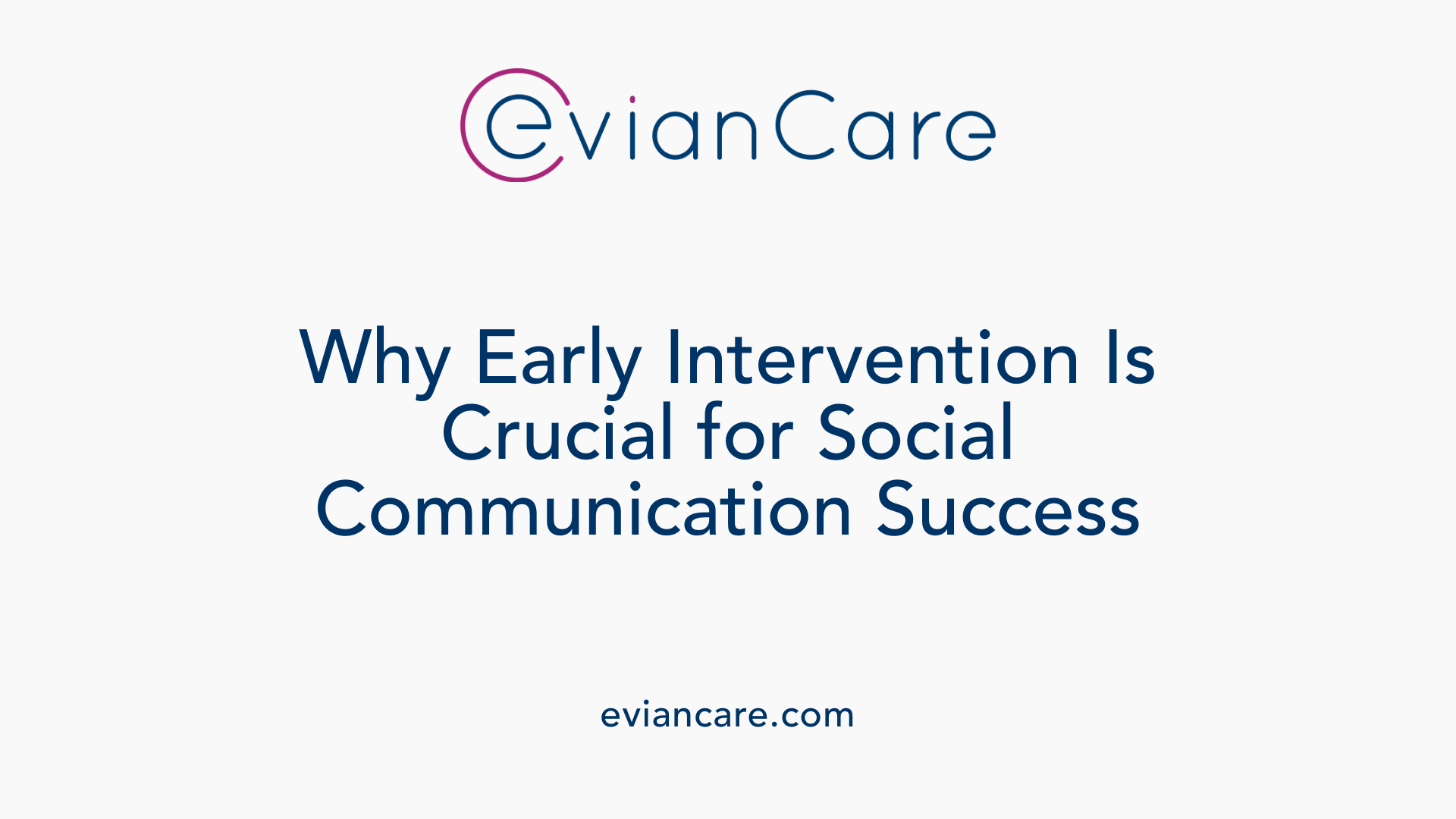
Why is early intervention important for social communication development?
Early intervention plays a vital role in supporting social communication skills during a critical period of brain development. When children receive support in their first few years, they are more likely to develop foundational skills like joint attention, turn-taking, and understanding social cues. This early support takes advantage of heightened neuroplasticity, which allows the brain to adapt and learn new skills more efficiently.
Implementing intervention early helps prevent the development of more complex social, emotional, and behavioral challenges later in life. It can reduce frustration and confusion in social situations and build confidence in children as they navigate interactions with peers, family, and educators. Plus, early therapy lays a strong foundation for language acquisition and social engagement, key components for success in school and later personal and professional relationships. Ultimately, children who start social skills development early tend to experience better outcomes in emotional well-being, academic achievement, and social participation.
What are some therapeutic approaches and treatment options for social communication challenges?
Various therapeutic models are employed to target social communication difficulties, adapting to the individual's age and needs. Common approaches include social skills training, which teaches specific behaviors like greeting others, requesting, and turn-taking. Behavioral interventions such as Applied Behavior Analysis (ABA) focus on reinforcing social behaviors through structured learning and positive feedback.
Developmental therapies, including Floor Time and the Relationship Development Intervention (RDI), aim to strengthen emotional bonds and pragmatic language skills. These methods foster social-emotional understanding, helping individuals interpret social cues, express their needs appropriately, and build meaningful relationships.
Techniques like social stories and video modeling are widely used; social stories help children understand social norms through narratives, while video modeling provides visual examples of desired behaviors. Peer-mediated interventions involve training friends or classmates to engage and support children’s social growth.
Assistive communication devices, such as picture exchange systems or speech-generating apps, also support social interaction, especially for individuals with speech delays or expressive language difficulties. These therapies are mostly delivered in naturalistic settings — homes, schools, or community centers — emphasizing practical, everyday skills.
In addition, family involvement and training empower caregivers to reinforce social skills at home and in community environments, ensuring consistency and generalization of learned behaviors. The overall goal of these therapeutic options is to improve pragmatic language use, social understanding, and the ability to navigate diverse social situations effectively.
Integration of Technology and Resources for Social Skills Development
What resources are available for social skills development?
There are numerous digital tools and programs designed to help individuals improve their social communication skills. Online websites such as Everyday Speech and Social Thinking offer structured lessons, videos, and activities tailored to different age groups and skill levels.
Mobile applications like Conversation Builder and Social Thinking - Detective provide interactive exercises to practice conversation skills, recognize social cues, and understand social rules in a fun, engaging way.
Supportive materials include social stories, comic strip conversations, and social skills groups—either in-person or virtual. These resources often use visual supports, scripts, and role-playing scenarios to reinforce learning and provide practical social practice.
Most of these tools are accessible from home or school settings, offering consistent and customizable options. They allow users to simulate real-life social situations, manage conflicts, and build pragmatic language skills in a flexible, engaging manner.
How do these resources enhance social skills growth?
The use of digital resources makes practicing social skills more accessible and less intimidating, especially for children and teenagers. They provide opportunities for repeated practice, feedback, and reinforcement outside of therapy sessions.
Digital tools can be tailored to individual needs, helping learners focus on specific skills like turn-taking, understanding facial expressions, or making inferences. These resources also promote self-monitoring and independence in social learning.
Accessibility and convenience of online social skills programs
One major advantage of online resources is their accessibility. They can be used anytime and anywhere, making consistent practice easier. Many programs include tracking features that allow therapists, parents, and teachers to monitor progress.
Furthermore, virtual platforms facilitate collaboration with speech-language pathologists and educators, ensuring that therapy and reinforcement are ongoing and integrated into everyday routines. This convenience supports continuous development of social skills in various settings, from classrooms to social events.
In summary, digital tools and resources have become vital components in fostering social communication abilities. They offer flexible, engaging, and personalized ways for individuals to learn and practice important social skills, contributing to better social interactions across all areas of life.
Supporting Social Communication Through Professional and Community Efforts
Speech therapy for social communication skills is a comprehensive, adaptable approach that benefits individuals across age groups. By combining tailored interventions, evidence-based techniques, early identification, family involvement, and accessible resources, speech-language pathologists can significantly enhance social understanding and interaction. Promoting social competence not only improves personal relationships but also supports academic achievement and participation in community life. Continued collaboration among professionals, families, and support networks is essential to foster meaningful social engagement and help individuals lead more fulfilling, connected lives.
References
- Social Communication - ASHA
- Improving Social Skills Through Speech Therapy: A Comprehensive ...
- Social Skills Speech Therapy: Helping Children & Adults Thrive
- Social Skills Development - Talkshop Speech Pathology
- Social Skills Therapy for Kids: How to Teach Social Communication ...
- How Speech Therapy Can Help Children and Adults with Their ...
- Effective Strategies for Enhancing Social Skills in Children with Autism




